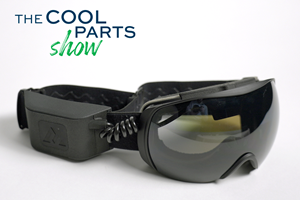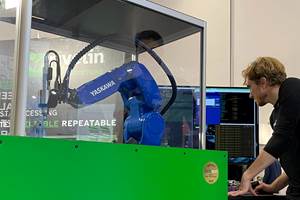What Goes Around Comes Around?
Consider the potential beneficial effect of so many students now being exposed to digital manufacturing technology at a young age. An Ohio startup aims to increase that exposure.
Share
The advance of 3D printing technology will have various effects, including those we explore in this magazine. It will change production and it will change product design. But in a different sphere, there is another effect that the advance of 3D printing will have that is liable to be just as important. Namely, it will change young people’s level of comfort with the idea of fabricating physical things. Thanks to the growing presence of 3D printers in schools, children will come to take it for granted that they have the ability to conceive and create unique objects. Never mind just “additive” manufacturing, children are now being acclimated to manufacturing like never before.
One company helping to speed this along is Polar 3D, a Cincinnati, Ohio, startup launched last year to manufacture 3D printers for schools as its primary market. Cofounder and retired Microsoft employee William Steele invented a 3D printer engineered for low cost and low complexity so that schools could afford it and classrooms could easily put it to use.
The design of the company’s printer includes ease-of-use features such as one-button material change-out. It includes safety features such as the lack of any pinch points and an insulating buffer guarding the print head, so that no hazard warning labels are necessary on the device. Also, the printer is controlled via a cloud interface, so no dedicated computer is needed.
But the most significant aspect of the printer’s design is what gives this company its name. Rather than moving in Cartesian coordinates (three straight lines), this printer moves in polar coordinates. Only the up-down and in-out axes are linear. The remaining axis is a turntable. The striking effect of this design is that the base of the printer can be narrower than its build envelope. A fully Cartesian printer has to be fully enclosed, but the polar movement allows this printer to be open, allowing for a device that is not just relatively cheap but also easy to pick up and move around.
Steele says he had the idea for the design on September 8, 2013. That date is memorable, because he had his first working prototype built on September 9. As it turned out, a 3D printer with polar motion was a straightforward-enough idea that it took him only a day to realize it.
The company sells the printer to schools for $599. (The price to others is higher.) Steele and cofounder Ed Estes say that in addition to permitting this price, the open, polar design has one other advantage that helps with engaging students. That is, this design makes the progress of the build not only easy to watch, but also “mesmerizing,” they note, because of the way the linear axes rapidly coordinate with the constantly pivoting rotary axis.
Both men hear anecdotes about how the printer is being used. The device is now in classrooms in 38 states. In one case, a STEM class has developed a stylus holder for a touch-screen laptop that attaches via the computer’s USB port. This product is likely to be commercialized. Yet perhaps the more profound anecdote is this one: An English class in one school is using the printer to make dioramas related to its reading. An English class.
What this application reveals is that the setting does not have to be a science classroom. The context does not have to be STEM. For students in the English class, the message about manufacturing technology that they are encountering is more expansive. Namely, they are learning that anyone who is curious about this technology can explore it and put it to use.
Related Content
Rekkie AR Ski Goggles Made Possible With 3D Printing: The Cool Parts Show #53
When the electronics enclosure key to these AR goggles proved difficult to mold, 3D printing allowed the inventors to keep the complexity — while also making improvements for assembly and user experience.
Read MoreFluent Metal Startup Launches With Focus on Liquid Metal 3D Printing
The company says its drop-on-demand technology can enable sustainable, production-grade additive manufacturing using high-value metal components.
Read MoreThe Robot Craftsman: Force Sensing and Vision Help Realize Automated AM Postprocessing (Includes Video)
Automated production via additive manufacturing will need automated postprocessing. This UK startup is equipping robots with the capabilities needed for critical, fine-detail finishing of metal 3D printed parts.
Read MoreLarge-Format “Cold” 3D Printing With Polypropylene and Polyethylene
Israeli startup Largix has developed a production solution that can 3D print PP and PE without melting them. Its first test? Custom tanks for chemical storage.
Read MoreRead Next
At General Atomics, Do Unmanned Aerial Systems Reveal the Future of Aircraft Manufacturing?
The maker of the Predator and SkyGuardian remote aircraft can implement additive manufacturing more rapidly and widely than the makers of other types of planes. The role of 3D printing in current and future UAS components hints at how far AM can go to save cost and time in aircraft production and design.
Read MoreHybrid Additive Manufacturing Machine Tools Continue to Make Gains (Includes Video)
The hybrid machine tool is an idea that continues to advance. Two important developments of recent years expand the possibilities for this platform.
Read More3D Printing Brings Sustainability, Accessibility to Glass Manufacturing
Australian startup Maple Glass Printing has developed a process for extruding glass into artwork, lab implements and architectural elements. Along the way, the company has also found more efficient ways of recycling this material.
Read More

















